Exploring how you can use diminished and augmented shapes to create automatic voicings.
In last month’s column (“Augmented and Diminished Forms,” March 2011 PG), we looked at how both diminished
and augmented shapes lie on the fretboard.
We will follow that idea in its
natural progression by exploring how
you can use these shapes to create automatic
voicings.
Within one cluster, raising or lowering
any single tone results in one of two
altered forms. When lowered a half-step,
the note becomes the root of a dominant
7th chord. If raised a half-step, the note
becomes the 7th tone of a minor 7b5 (or
half-diminished) chord. First, let’s consider
descending alterations into dominant
7th chords.
Much like the augmented phenomenon
we discussed last month, the
diminished parental form produces two
important structures, and through gradual
alterations they continue to expand
into variations. The diminished form
shown in Fig. 1 produces the following
results: From the four tones (G, Db, E,
and Bb) found within it, the descending
alteration of any single tone by a half-step
produces four different dominant
7th chords.
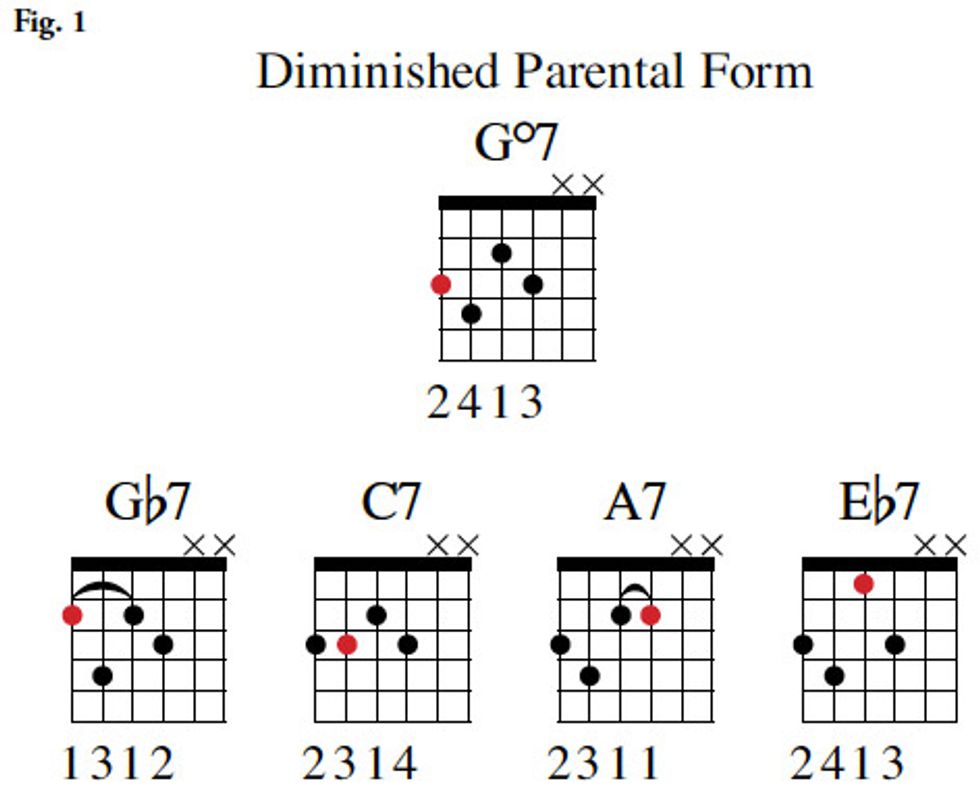
When the same chord shapes unfold horizontally in one key, they automatically create four inversions on the selected string group as shown in Fig. 2.
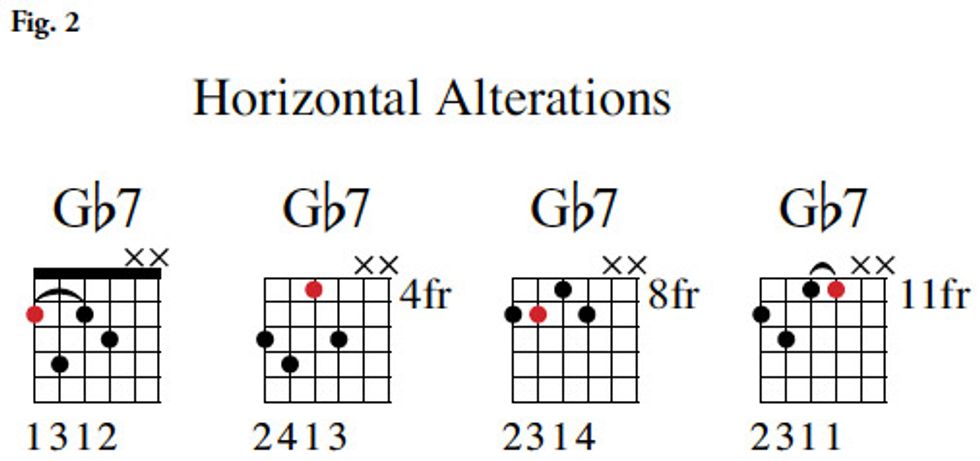
Last month, we looked at how the augmented triad shapes change quality when moved vertically across the fretboard. A similar pattern appears with the diminished form. In Fig. 3, we see how a Gdim shape moves to D7 and then to G7b5 when shifted vertically. Once again, as with the augmented procedures, these particular fingerings indicate the vertical analysis of three automatic voicings.
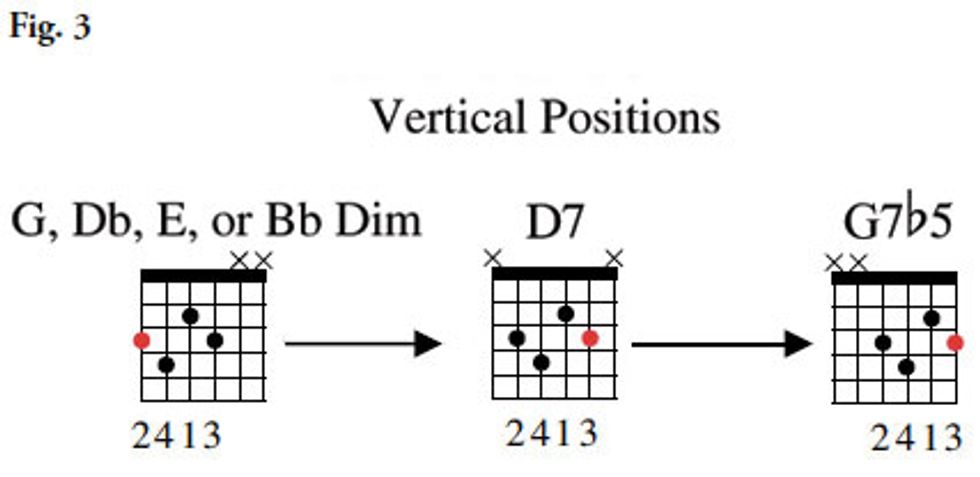
Raising one of the chord tones by a half-step alters the initial diminished form by producing a minor 7b5 form. This is illustrated in Fig. 4.
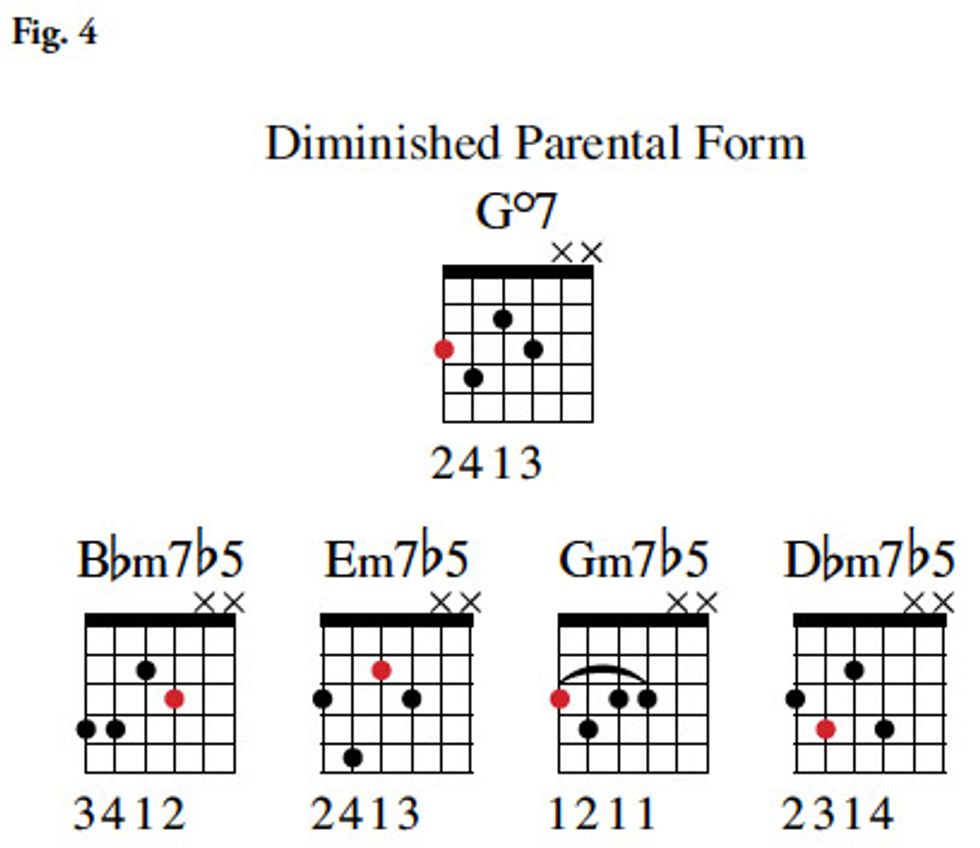
To completely understand the nature of these forms and how they relate to the fretboard, it is essential that you transfer these concepts to other string groups.
In upcoming lessons, the harmonic forms we’ve covered so far will not only continue to expand, but they’ll also serve as the architectural groundwork for melodic linear studies. In the coming months, we’ll discover how to apply these linear studies both vertically and horizontally across the fretboard.
Ah-ha!
Minor 7b5 Chord. The basic formula for these chords is 1–b3–b5–b7. Another way to think of them is as a standard minor 7th chord with a lowered fifth. Many times you see minor 7b5 chords functioning as a ii chord in a minor ii–V–i progression. Tunes such as “Stella by Starlight, “Round Midnight,” and “Gloria’s Step” all use minor 7b5 chords in both diatonic and parallel functions. Another name used for these chords is half-diminished, a term that’s used when the chord is functioning diatonically as the vii in a major key. This description distinguishes the chord from its diminished 7th sibling (which has a 1–b3–b5–bb7 formula). —Jason Shadrick
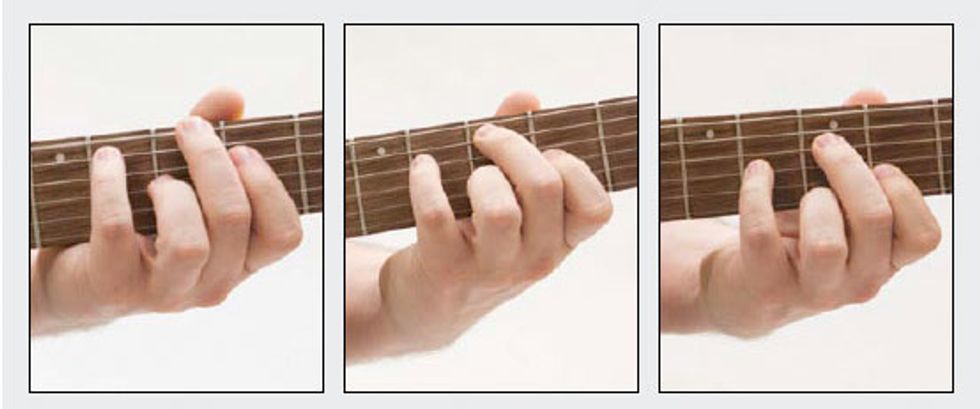
The chord shapes shown in Fig. 3 can be a little tricky to play. In the above photos, you can see how each one lines up on the fretboard. By moving each shape directly across the fretboard you can move from Gdim to D7 and finally to G7b5. If you are feeling adventurous, explore the different types of chords you get by moving the G7b5 shape horizontally up the fretboard. Remember, you don’t always need the root!—Jason Shadrick
 Pat Martino
Pat MartinoSince his first recording as a leader in 1967, Pat Martino has constantly pushed the limits of jazz guitar with his flowing technique and powerful, muscular tone. Showing no signs of slowing down, Martino still travels the world performing and giving lectures about his approach to the guitar. Currently, Martino is working on an autobiography and serving as adjunct faculty at the University of the Arts in Philadelphia. For more info, visit patmartino.com.
